I (Doug) started out kind of opposed to this idea. I’ll have to admit, in some ways, it’s growing on me a bit. I want to like it. But I’m still having reservations about a new way to see the world. Check it out at…
Then please give us your take on the project. As for me, I want to love this approach. It would be totally fun to see the world geographically again (like we used to back in the 70’s). It would be *much* easier to organize our outreaches. We could have regional people who actually had *regions* again! But, alas, I’m having trouble. Here are some of my concerns (below). Can you please help me out?
*** “missing people” — With the 24:14 Initiative, if I understand it correctly, sometimes they just focus on, say, the 3 largest people groups in a particular Omega Zone. Just can’t help but feel like this bypasses the “lost sheep” theology of Jesus. It seems to *invite* the fact that people groups will be ignored or ‘missed.’ So each Omega Zone coordinator would have to be ultra-concerned about that.
*** ‘too complicated’ — Determining Omega Zones just seems unfairly biased or complicated to me. With “people group thinking,” we just let the people group determine the polygon where they live. Plain and simple. If they’re scattered across a wide area, we try to cover the entire wide area. Omega Zones, however, set the area (sometimes rather arbitrarily).
*** “mixed data sets” — I’m no expert, but it seems that the 24:14 model has mixed IMB and JP people group data to the point that — it’s impossible to tell where they got what. It would be less confusing to me just to stick to one standard. That would also make it easier to refresh.
*** “spreadsheet weakness” — There’s no way to represent the complexity of an Omega Zone with a spreadsheet. To me, it just plain … falls short.
*** “Western” — The whole thing reminds me of the failed “MPTA’s” that Campus Crusade tried to use around 1989. The fad lasted around 3 years because — it wasn’t based on the *data*. It was based on outside, imposed boundaries. Anything like that is, in my opinion, destined to be short-lived. I’m picturing Global South workers trying to understand why this boundary, why that boundary.
*** “Country-level data” — But the worst curse of the entire data set is that the researchers are using country level data to classify the Omega Zone as “World A, B, or C.” As a result, it’s pretty obvious that there are huge conflicts in India, Bangladesh, Pakistan, and maybe even Nepal and Burma/Myanmar.
*** “Population limitation skews boundaries” — Because the originators were trying to create Zones with a certain population, they were inconsistent in how existing geo-political boundaries were utilized. You’re aware we have work in Arunachal Pradesh, I believe. Just look at that Zone, for example. And check Balochistan (Pakistan). Sometimes it uses district boundaries. Sometimes it doesn’t. Because it was an artificial restriction. And because these zones don’t exist outside this research, we can’t verify or draw comparisons — even with, say, U.N. data or Wycliffe stuff. Only the people who charter this approach will be able to tabulate results. To me, the entire world of researchers have basically said, “How many people live in this people group or city?” and then they’ve let the answer be the answer. What in the world are they thinking by trying to split up reality — and why? It doesn’t make it easier for Zume to work in a certain area. Because once a particular group of implementers get going in a certain ethnic group, the Zume strategy can proceed without change throughout the rest of that *language* or *ethnic* group (as opposed to just …. within an artificial zone).
*** “Limited use” — This model just isn’t being used anywhere else to speak of, in my opinion. It isn’t even used as a standard within YWAM itself! I just spent time with a bunch of YWAM workers and they aren’t at *all* focused on this data set.
*** “Ignores Science” — Even the idea of using census tracts ignores the reality of what’s on the ground. Last weekend, I watched a prayer focus try to use census tracts as a basis for sending out prayer teams. It was insanity. It created divisions that don’t exist on the ground and imposed unnecessary limits on real neighborhoods. Someone in some office in Washington, DC, might have thought those made sense for a particular purpose — and maybe for that purpose they did — but these pray-ers were unnecessarily hampered by thinking they had to pray “the Zume way.” It was a crazy restriction that resulted in people not seeing the reality of who *lives* in that census tract. Omega Zones are even *more* insane around the world because they aren’t even as established nor as consistent as census tracts are.
As a result of these issues and more, I just can’t get excited about these yet. So please … help me work through this. When I asked one educator/trainer, whom I really really trust, he responded, like this:
“The current state of missions has led to rapid progress in terms of engagement of people groups, but very little in terms of making any kind of serious dent among unreached peoples. Many agencies and organizations have deployed people among unreached peoples somewhere but most have not really been using approaches that would multiply disciples and churches. It seems as if in many cases, presence is the goal, and that includes presence somewhere rather than everywhere. For example, in some people groups, there are a few people serving in the major cities, yet the vast majority of towns and rural areas in the country have no work at all.”
“Using the 4K system as a base does not preclude approaching things from a people group perspective within a geographic area. It does ensure that people everywhere have access to the gospel. The 4K research breaks down the major people groups represented in each of the 4,000 zones. It has about 65,000 entries so that is more than 16 people groups per zone. They divide up each zone into smaller districts when needed. Geography and ethnolinguistics need not be an either/or proposition. For us to really do what needs to be done, we need to address both. Note that “every creature” in Mark and the “Jerusalem, Judea, Samaria, and ends of the earth” in Acts both have a primarily geographic view to balance the “every people, tribe, tongue and nation” view in Matthew. If we have people in every place that are taking an ethnolinguistic approach in that place, we will be getting somewhere.”
What do you think? Does that sway your thinking? We’d love to hear back. Just click “Comment” following the web version of this item and help me learn to love this new paradigm. Thanks, in advance, for any help you can give.
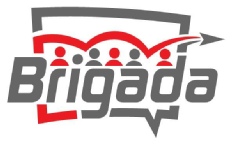

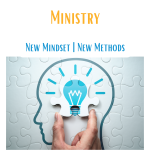
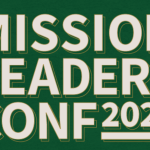


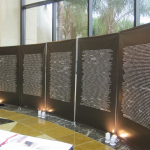
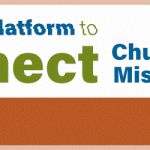



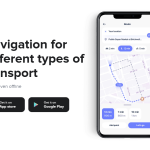
Doug, Thank you so much for your courage in speaking out regarding your serious reservations regarding 4K mapping. Ever since I first was introduced to 4K mapping my concern has been that just as people are starting to understand people group thinking here comes a model that muddies the water and is difficult for missionaries to understand, much less ordinary people in churches. I never thought 4K mapping would last this long because of its many deficiencies, but my sense is that it continues to ride along the coattails of the Call2All’s success. I like everything else that Call2All is doing, except for 4K mapping. I think Call2All’s time would be much better spent on helping people really understand UPGs and unreached UPGs. At the Call2All conference I attended, 4K mapping was confusing and a distraction to all the people I talked with. None of them really were able to figure out why it was being included with the conference. I appreciate the hard work people have put into it, but I don’t think it’s helping the missions movement around the world get where we need to be going.
My concern with the omega zones is that it is not explicitly seeking to obey the great commission. Jesus was very specific (and ingenious) when he commanded us to go to every ethnic group. Not everyone in the missions community has been exposed to people group thinking, in the Perspectives course, for instance, so we regularly see people even in places of leadership, who think big, but re-invent ideas that are so pre-Lausanne congress. Jesus was clear in both the ends and means he gave us: we are in danger of disobedience, and thus squandering a historic high point in missions in the west. The days of “spread the gospel everywhere” as a goal are gone: we know the world is a waffle, not a pancake. I repeat, this is a critical issue of obedience. I would add that Acts 1:8 is not a balance to the great commission: it is prophetic of the pattern the church would follow in obedience as God completed the focus on the people groups that Jesus was preparing them for all though His ministry. But Acts 1:8 is not a specific commission or strategy as Matt 28 is. Thanks for tackling an important topic for an important initiative.
Hi Doug, First of all, thank you for taking the time to look at our 4K strategy so carefully. It actually made me really happy to see all your questions and observations. Hopefully I can answer some of the issues you addressed.
Our primary goal and objective on our 4K team is to provide the lines (Omega Zones) on the map, and people can use them and fill them with data however they want and with whatever they want. If you have seen how an initiative or project is using the Omega Zones for their own strategies, that is entirely up to them how they use the framework internally within their organization. Our heart on our team is still for every last person, people group, language, nation, city, sphere of society, demographic, etc.. If you are seeing some place or people get missed, you might be looking at how one particular group is using it.
Regarding the 24:14 Initiative, you reference this a couple of times. Not sure what you’re referring to, but it does not come into play in the development or strategy of 4K Omega Zone development (at least, it is not language we use…if I knew what it was, perhaps I could answer to it better…forgive me!).
Regarding construction of zones: I noticed you reference people groups several times. To be clear, we do not use people groups to determine the OZs. Our factors in OZ development are population and gospel availability (the ABC factor provided by World Christian Database). We will occasionally overlay the people group data that IMB has created with our Omega Zones as individual map requests come in. We have included a list of PGs per OZ on our website because that is one of the greatest requests our office receives, so by posting it under the Tools section, it saves time in answering individual requests. This also helps bridge the gap in missional strategies between OZs and PGs–helping groups that have been working with PGs for years be able to drill down exactly where they still need to go. We get the same requests for languages and church information as well, but the mission’s interest in People Groups overlayed with Omega Zones has been the hottest product, so that is why it is reflected more in the Tools section. Likewise, in the BPI Data section is the overlay of OZs with languages of the world.
With regard to the formation of our Omega Zones, I can guarantee you that the process is neither arbitrary nor “ignoring science.” I’m going to get irritatingly detailed here, so bear with me :) We go through a rigorous, detailed research and data-processing routine for each nation/province that has gone over its gospel availability population threshold. We do this updating once every 2-3 years. Granted, there have been some exceptional nations where the political administrative divisions don’t match the cultural reality of the country. In those cases, we have sought out many different options from locals in that nation of how we could structure their Omega Zones. In other cases, we have had to create composite Omega Zones in certain regions where perhaps we need to create more Omega Zones but the divisions stop at a certain level, or in the case of the USA we must merge many counties to make “in-between” levels of division. Though those composite zones do exist, I can tell you that they take up about 1% of all our 4,000 zones–and none are drawn arbitrarily, I can guarantee you that as well! We use political divisions of nations to draw the lines.
Also, you are right about our data on the website. It is mostly at country level and has not been recently updated. It is definitely the weakest part about our website, mainly because we have begun to focus on updating data for individual organizations as they’ve come to us, and have therefore turned our attention from the data we get from World Christian Database, since much of their data does not go down as far as our Omega Zones. Your observations on this will help us re-evaluate its relevance on the site in the future, so thank you!
I’m also grateful for the feedback in the comments section. Just to address some of those, it is our job as a 4K team to simply provide a mapping framework for people to use to help them reach every last corner of the globe–be that churches, organizations, partnerships, and any other group wanting to complete the Great Commission. Jesus said to reach all and every, and we in 4K are called to help people seek out the “where” in that task. The “what” is where unity and collaboration within the Body of Christ (ie. organizations and churches with specific passions and callings) can contribute to the map, either internally or collaboratively with other groups. We have created resources in the context of partnerships of organizations wanting to share data among each other, as well as helping individual organizations use the maps for their own internal, private use.
As to the comments of who uses it and how we have “lasted this long”, I can say for certain we’ve last this long because God keeps telling us to continue on, and keeps giving us plenty of work to do, so we walk forward in both obedience and passion of calling. I’m also pleased to say that groups are not only using it, but some are doing incredible work in their nations. Often, though, where missionaries are finding the OZ framework most helpful are in locations where it is not wise to publicize ministry activity. If you would ever like to know how people use the OZ framework, I would be happy to give examples! Rest assured, please know that we are never without work to do and maps to make :)
At the end of the day, our framework is just trying to create a more detailed look at the world than the “countries” framework, and a less overwhelming task than the 3 million “cities” framework. We basically just follow the Goldilocks principle of geographic mission strategy–not too big, not too small, but just right :)
Additionally, we don’t presume to overshadow any other initiatives like UPGs, 10/40 Window, or any other missional strategy. In fact, we have very good relationships with all the incredible workers at Joshua Project, IMB, Campus Crusades, JesusFilm, SIL, and more. None of us in the mission strategy world presume to be “the answer”, but acknowledge that by working together, we truly can reach everyone!
I hope this answers a few questions. You can also always feel free to ask any more detailed questions by emailing us at 4k********@***il.com. Thank you so much for starting this discussion so that people can have similar questions answered! And as is the case with every other volunteer-based ministry in the world, we do covet your prayers! Blessings, Jill Thornton, 4K Team Leader
Wow — great responses. Wade and Mark, you are a mind-reader. These are indeed some of our concerns. Jill — my goodness… bless you for taking the time to write your response. And it *really* helps our discussion. We cannot say thanks enough. Just one question that I have right now then… can you sum up for us why it’s important to draw these extra districts, since we already have http://www.JoshuaProject.net people group maps in most cases? Just a summary will do. I’ve read your response above and can’t get to that answer yet. Forgive me if I’m just dense. Thanks for any help you can give.
Did you see Jill’s response to you questions? You didn’t mention her so I assume you didn’t. I think she answers most of your concerns.
Hi Cal. But I think I *did* mention her. Maybe I’m missing something though. Please help me out if I am. Either way, i addressed her by name in my reply, brother.
Graeme
I have wanted to avoid getting involved in this.
Speaking for South Asian geography. I was involved in 4K more than a decade ago, briefly.
Geography; people in South Asia identify by their district. They are also aware of the subdistrict that forms their local geography, which may be known variously by block, circle, tehsil, taluka, VDC …
The vast majority of Omega Zones of South Asia are Districts.
As soon as we merge districts we have created an artificial piece of geography, and if done by outside people, there is then the danger of imposing someone else’s view on the people and their communities.
Much of India should actually be at subdistrict level, but this requires researchers to handle a 10 fold jump in the amount of data over districts and published material is limited.
For practical purposes a district is the largest practical piece of geography for cp and ministry work. A typical district will have hundreds of communities in it using 20 to over 100 languages.
By merging geography, especially geography where details of communities, their languages [almost never 1 language] and religious identification, we hide communities. Example; Arunachal Pradesh has 19 districts, near 200 subdistricts, for which various amounts of data exist, and good data at district level. What 4k and IMB call Apatani [they call themselves Tanu, an example of a name imposed from outside], exist in 18 of 19 districts, so merging to form one Omega Zone appears reasonable, until we realise only 4 of the 19 districts have ‘Apatani’ in numbers that can be found readily. 6 of the 18 districts the Apatani language is not used by this community. Nissi is the second most common language after Apatani for Tanu.
Adi Minyong are present in 16 districts, but only 3 districts, all adjoining, are Adi Minyong found in numbers. We need the district details to determine where to find them.
Detail is good; Adi Minyong in District West Siang, Census provides [scaling to 2011] 1880 Hindu, 18 Muslim, 980 Christian, 24 Buddhists and very importantly, 7825 with their own tribal religion.
Omega Zones may look good away from the actual geography. But on the ground we need to be considerate of how the people perceive themselves as community [especially their own name for themselves] and the geography to which they identify.
For the applications Doug was talking about, the new Omega Districts are one-tenth of the Omega Zones in terms of population. That makes a lot of the specific “problems” mentioned disappear. It is usually about right for a sub-district in India.
One issue that hasn’t been mentioned yet is the huge gaps in under-engagement when we use people group only approaches (within a country). Given recent progress in engagement of people groups globally, it is likely that by 2025 there will be no remaining unengaged groups globally, at least not with a population over approximately 2,000. Under-engagement, however, is an issue for which there is no apparent end in sight. Just as an example, look at any number of groups in India. They are engaged if anyone is working among them anywhere. Many groups show up in ten or more states and many districts within each state. If we are only looking at them from strictly a people group perspective we can say they have been addressed if we work among them in one district and one state. The 4K approach (extended to districts rather than zones) helps make sure we address them in every location where they live. It is not a replacement for people group thinking, it is an extension of it to multiple locations rather than simply at the geopolitical nation level. In other words, it works (as proposed in the specific applications Doug is referencing) the same way as the current approaches at Joshua Project or the IMB but with far greater granularity.
Curtis, now *that* is an approach that makes sense. Given THAT kind of thinking, I could get excited about a geographic angle again. Thanks for the input.
Graeme, VERY helpful perspective. Wow — we’re thankful for those who help us gain a sense of granular vision!
Thanks for the discussion everyone. I tried posting a reply from my phone while I was on my 3-day holiday weekend but it wouldn’t let me for some reason….glad I didn’t because Curtis explained it much more elegantly and concisely than I did :) I would still be happy to get into more details for those who are interested.
To Graeme, I’m copy/pasting your text to include in our conversation at our next annual Omega Zone Development Team meetings, so thanks for that! Blessings on you all, Jill
Iꞌve used a totally different approach for mapping the whereabouts of members of a single people group of about 40,000 of which two thirds or more are living in diaspora – in a few hundred locations in 30-40 states of two or three countries. Check out the second interactive map on the following people group profile. (The one with polygons is of their native region.) http://es.etnopedia.org/wiki/index.php?title=Triqui,_Copala
Curtis touched on a key point – engagement is the first step, but not the end goal. Saturation is the end goal. Seems like Matt 28:18-20 is the strategy and Mark 16:15 is the end goal. Matt 24:14 may suggest the same. The gospel of the kingdom is to be preached, not to the nations, but to the whole world and the result will be a testimony to all the nations.
A central question becomes how should saturation be measured and tracked? The elegant 4K Omega Zones provide a geo-political grid to track saturation. Given that the starting point of 4K is geography, a question might be are Omega Zones the best grid for tracking people group saturation? Is it better to start with a geo-political grid such as Omega Zones and then evaluate all the people groups within that grid OR to start with people groups and evaluate all the geo-political units the group is located in?
Since 1974 people groups have become the primary focus for many agencies and initiatives. Given the momentum in the people group direction, is it beneficial to track activity primarily by geo-political units? It seems unlikely that an Omega Zone coordinator would be able to initiate, coordinate and foster kingdom movements in possibly dozens of very different people groups living within a single Omega Zone. Would focusing on geo-political units possibly reintroduce the challenge of “hidden” peoples all over again?
People group datasets have already started tracking saturation by geography when people groups are defined by country. From a Biblical stand point, the Hausa, for example, are one ethnic people group. However traditional people group datasets define and count people groups by country e.g. the Hausa in Niger, the Hausa in Benin, the Hausa in Nigeria, etc. For saturation tracking purposes, would it make sense to extend the granularity to the state / province / district / county / pin code / village level as needed? Maps and polygons are available for most people groups that could be used to generate much of the sub-country detail.
24:14 No Place Left tracking could then be: Is there a Hausa kingdom movement in Kaduna State of Nigeria? Is there a Hausa kingdom movement in Zamfara State of Nigeria? etc. This could be refined to lower and lower geographic levels as needed. Existing people group-specific advocates and networks could be coordinators for promoting and tracking saturation within their people group across all geo-political units. Seems like this keeps people groups as a unit and focus and also presses toward geographic saturation.
In summary, should efforts like the exciting 24:14 No Place Left Initiative track saturation by starting with geo-political units with a secondary focus on people groups or start with people groups and track progress in the geo-political units the group is in? While there is a place for both approaches, the latter might have some advantages given the current state of missions information and strategy.
Wow Dan. When I grow up, I want to write so precisely, so sensitively, and so thoughtfully.
Doug,
This is really interesting stuff! And I agree, it is complex. However, to get straight to the point, answering your original question about prayer, strategy, and mobilization purposes, I believe it is better to do the UPGs, because it is easier for the masses to understand. The other approaches may have value to certain groups, so they can continue to develop and use them to suit their purposes.
I downloaded the resources for the part of the world I know best and find that the information is pretty general. Far more clarity about the issues of good news engagement when surveyed from a PG perspective. Two reasons: 1) for much of the world we are talking about, good news engagement needs to be framed in ethnic language and culture. That means identifying the PG in focus is key to relevant engagement at the worker level. 2) the presence of a church in a geographic area OFTEN has little impact on local PG’s. It can be made up completely of people of another PG and maintain such cultural isolation that the good news in insulated behind the walls. This is more common than we like to admit.
As others have mentioned, PG’s frequently cross geographic boundaries. They may have far more in common with something across the border than in their own country. When measuring impact and resources, the whole PG needs to be considered- including how they view their own identity and borders. Just some thoughts
Very Helpful! Thanks to all who have posted.